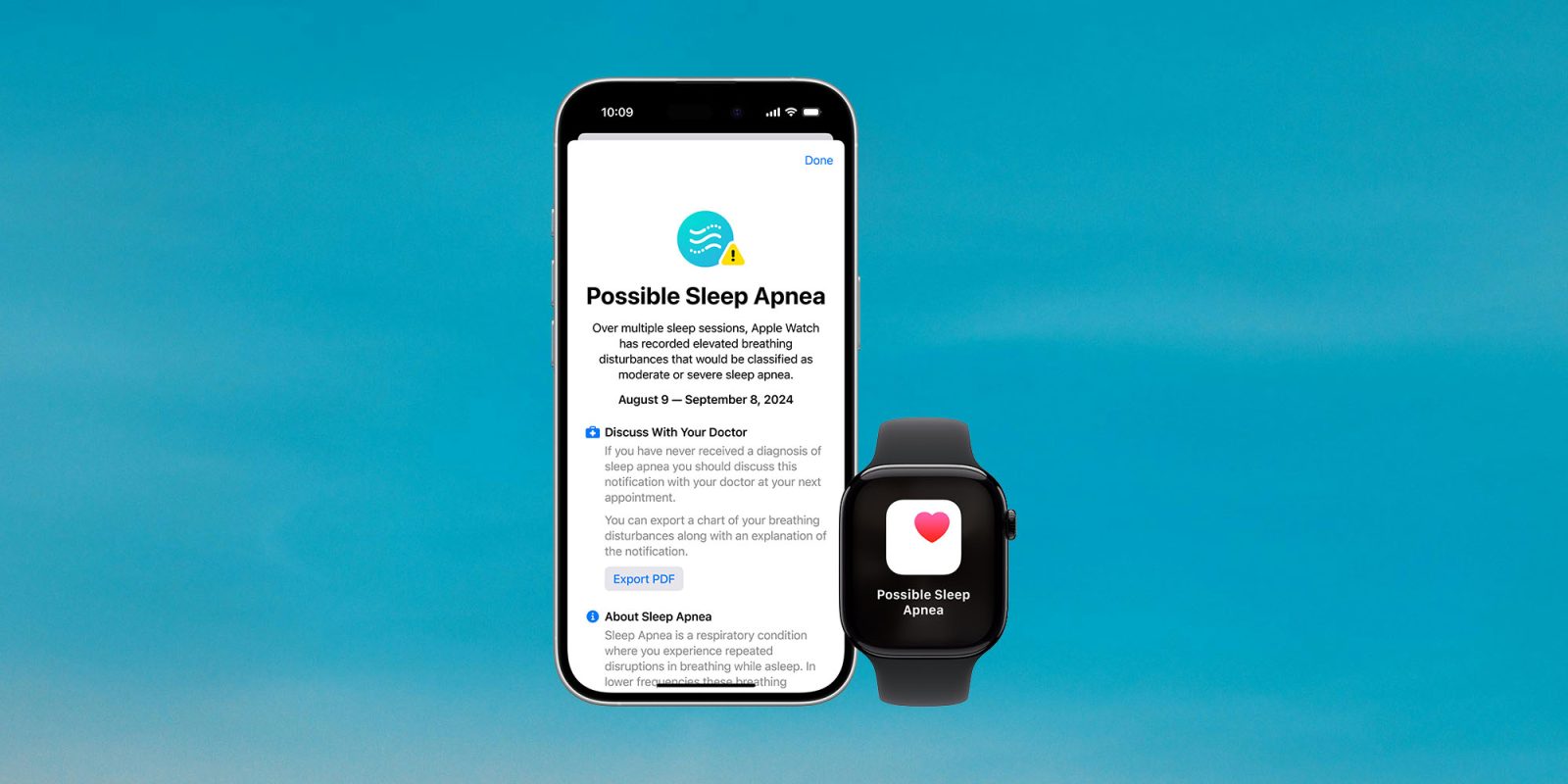
Apple last month announced a new sleep apnea detection feature for Apple Watch. Although the feature had already been approved by the FDA in the United States, it was still unavailable to users. However, the latest iOS 18.1 beta finally enables sleep apnea detection for compatible Apple Watch models.
Sleep apnea detection on Apple Watch
As confirmed by 9to5Mac, iOS 18.1 beta 6 lets users enable sleep apnea detection. After updating the iPhone to the latest beta available, users will see the option to enable sleep apnea detection in the Sleep Settings within the Watch app.
Apparently, users don’t need the latest beta of watchOS 11.1 to enable the new feature. Of course, you need a compatible Apple Watch. In this case, sleep apnea detection works with Apple Watch Series 9 and later and Apple Watch Ultra 2.
However, similar to other health features, it requires approval from regulatory agencies in each country. For this reason, it’s not available everywhere.
The feature is based on the Apple Watch’s accelerometer, which is able to detect potential breathing disturbances during sleep. The feature requires wearing the Apple Watch for a few nights before you can receive sleep apnea notifications. Here’s how Apple describes it:
Sleep is an important area of health as it impacts a person’s overall physical and mental wellbeing. Sleep apnea is a prevalent disorder in which breathing momentarily stops during sleep, preventing the body from getting enough oxygen. The condition is estimated to impact more than 1 billion people worldwide, and in most cases, goes undiagnosed. If left untreated, it can have important health consequences over time, including increased risk of hypertension, type 2 diabetes, and cardiac issues.
Breathing Disturbances is an innovative new Apple Watch metric that uses the accelerometer to detect small movements at the wrist associated with interruptions to normal respiratory patterns during sleep. Every 30 days, Apple Watch will analyze breathing disturbance data and notify users if it shows consistent signs of moderate to severe sleep apnea so they can speak to their doctor about next steps, including potential diagnosis and treatment.
We’re updating this article…
FTC: We use income earning auto affiliate links. More.





